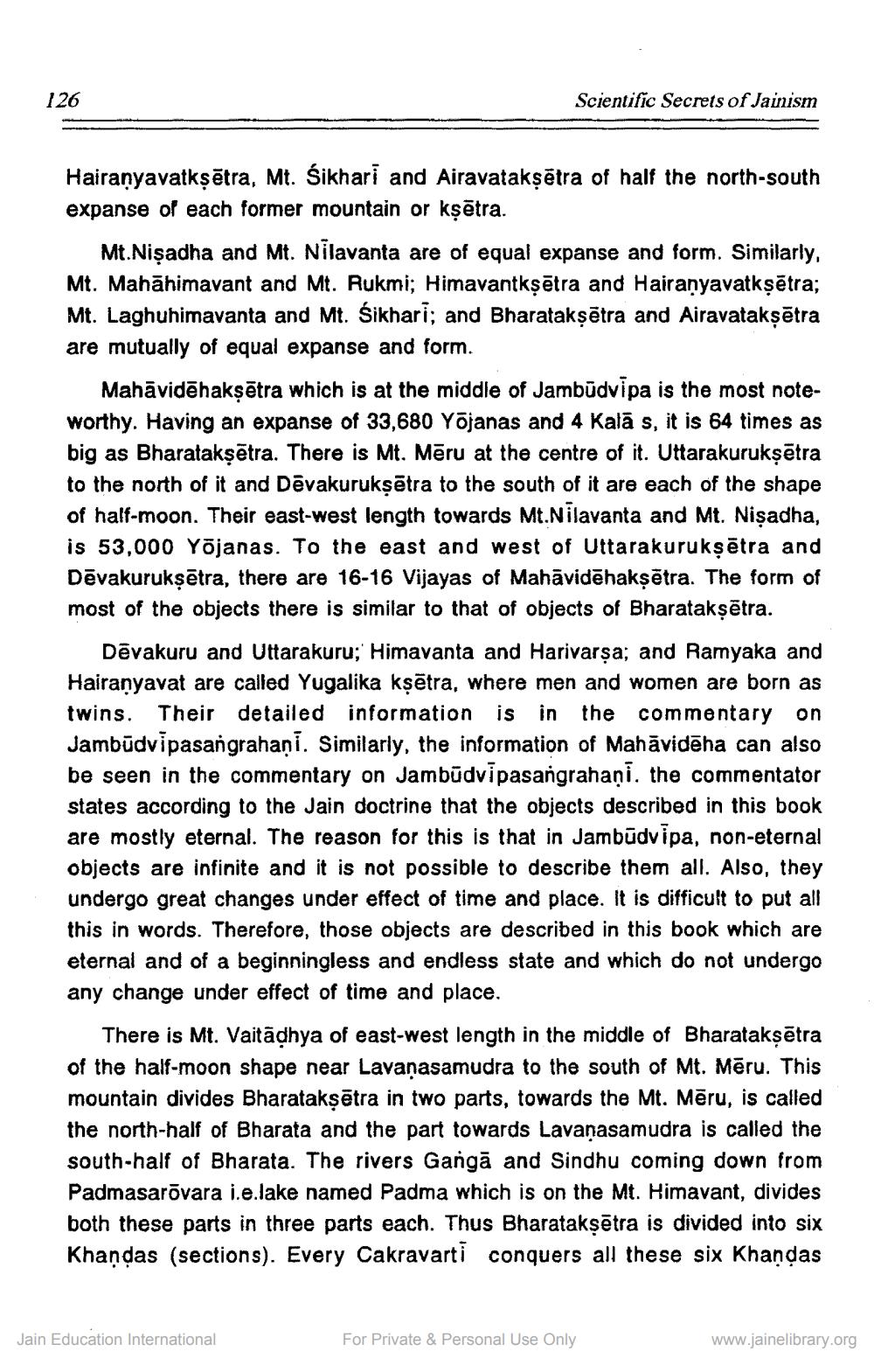________________
126
Scientific Secrets of Jainism
Hairanyavatkşētra, Mt. Sikhari and Airavataksētra of half the north-south expanse of each former mountain or kşētra.
Mt.Nişadha and Mt. Nilavanta are of equal expanse and form. Similarly, Mt. Mahāhimavant and Mt. Rukmi; Himavantkşētra and Hairanyavatkņētra; Mt. Laghuhimavanta and Mt. śikhari; and Bharataksētra and Airavataksētra are mutually of equal expanse and form.
Mahāvidēhaksētra which is at the middle of Jambūdvipa is the most noteworthy. Having an expanse of 33,680 Yojanas and 4 Kalā s, it is 64 times as big as Bharatakşētra. There is Mt. Mēru at the centre of it. Uttarakuruksētra to the north of it and Dēvakuruksētra to the south of it are each of the shape of half-moon. Their east-west length towards Mt.Nilavanta and Mt. Nişadha, is 53,000 Yojanas. To the east and west of Uttarakuruksētra and Dēvakuruksētra, there are 16-16 Vijayas of Mahāvidēhaksētra. The form of most of the objects there is similar to that of objects of Bharataksētra.
Dēvakuru and Uttarakuru;' Himavanta and Harivarsa; and Ramyaka and Hairanyavat are called Yugalika kşētra, where men and women are born as twins. Their detailed information is in the commentary on Jambūdvipasangrahani. Similarly, the information of Mahāvidēha can also be seen in the commentary on Jambūdvipasangrahani, the commentator states according to the Jain doctrine that the objects described in this book are mostly eternal. The reason for this is that in Jambūdvipa, non-eternal objects are infinite and it is not possible to describe them all. Also, they undergo great changes under effect of time and place. It is difficult to put all this in words. Therefore, those objects are described in this book which are eternal and of a beginningless and endless state and which do not undergo any change under effect of time and place.
There is Mt. Vaitādhya of east-west length in the middle of Bharataksētra of the half-moon shape near Lavaṇasamudra to the south of Mt. Mēru. This mountain divides Bharatakşētra in two parts, towards the Mt. Mēru, is called the north-half of Bharata and the part towards Lavanasamudra is called the south-half of Bharata. The rivers Gangā and Sindhu coming down from Padmasarõvara i.e.lake named Padma which is on the Mt. Himavant, divides both these parts in three parts each. Thus Bharataksētra is divided into six Khandas (sections). Every Cakravarti conquers all these six Khandas
Jain Education International
For Private & Personal Use Only
www.jainelibrary.org




